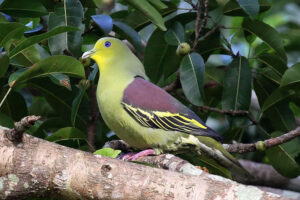In this location, there are abundant natural resources, including well-grown trees, a variety of plants and animals, and a large lake named Vihara Wewak, which is a very large tank. It is extremely beneficial to the farmers who reside in this region. Nandimithra Rajamaha Viharaya (Nandimithra Rajamaha Temple) It is also known as Nandimithra Nawa Wangu Rajamaha Viharaya, and it is a historic temple that is located in Pallama, close to the main route that connects Chilaw and Anamaduwa provinces. Traditionally, this temple was erected by the followers of Nandimithra, who was one of the ten worriers of the greater King DutuGemunu (161-131 BC), who ruled from Anuradhapura at the time of construction. Nandimithra is unusual among the ten warriors since he was the nephew of Mitta, a warrior in the army of Elara who was killed by Nandimithra.
Despite the fact that the temple appears to have been stretched across a broad region, it is currently restricted to a small plot of ground. Some of the land is farmed by the villages as well. The stupa has been shaped into a mound of earth by the elements. The construction of this stupa is supposed to have begun one day after the death of Ruwanweliseya of Anuradhapura. As a result, According to legend, the stupa’s terrace was constructed in the shape of a nonagon with nine edges. It is still possible that Nandimithra created these nine edges in memory of the nine other generals of greater monarch Dutugemunu who served under him. At the time, this terrace is no longer visible, with only a few fragments of its foundation discernible in a few locations.
Nandimithra Rajamaha Viharaya is a historic temple that is located in Pallama, close to the main route that connects Chilaw and Anamaduwa provinces. The stupa has been shaped into a mound of earth by the elements.
A group of gigantic granite pillars, which once supported a structure in ancient times, is located adjacent to this stupa. Based on the pillar top, it is believed that this was a two-story structure when it was constructed. You may also observe a granite slab on the ground, which, according to legend, was dropped by Nandimithra when he learned of the death of king Dutugemunu. Those stories have a tremendous amount of importance for this location. People are happy to say that here is the location where the warriors Nandimithra lived. There have been a number of prehistoric artifacts discovered in and around this temple, which is known as the Nandimithra Nawawangu Rajamaha Wiharaya in recent years.
The Ven. Pothuthukkulame Deerananada Thera, the Chief Incumbent of the temple, believes that the row of granite stairs and the moonstone discovered beneath the temple grounds are remnants of the Anuradhapura period and date back to that time. An ancient copper statue was discovered by a farmer in Pallama, Indonesia, in 2001, while he was digging a coconut hole on his property. His farm was close to the Pallama Nandimithra Nawawangu RajamahaViharaya, which is a Buddhist temple. A little over five feet and six inches in height, this statue is an impressive sight. The sculpture, which is considered to be of Mihindu Maha Thera and is currently in the possession of the Archaeology Department, is currently on display.
It was discovered in 2010 that ruins of an ancient edifice were discovered in the temple grounds as excavations were being carried out to lay the foundation for a new construction. Agronomic implements and tools believed to date back to the greater King Dutugemunu era were discovered under the bed of a parched tank in Pallama in 2012, as a result of which The tank, which was created by the warrior Nandimithra, is widely believed.
The moonstone in the temple is gorgeous and antique. The moonstone measured around 6 feet in length, while the row of steps were approximately 8 feet in width. There were a number of artifacts discovered at the site, including a granite vase that had most likely been used to routinely store medicinal herbs. A memory, multiple axes, and iron nails were among the things discovered during the excavation. A group of villagers were digging for water in a dried-up tank as a result of the drought when they came across the objects.
A group of gigantic granite pillars, which once supported a structure in ancient times, is located adjacent to this stupa. A granite slab on the ground, which, according to legend, was dropped by Nandimithra when he learned of the death of king Dutugemunu.
Image Credits: amazinglanka.com
WHERE TO STAY
For those planning a trip to Nandimithra Nawawangu Rajamaha Viharaya, we recommend booking your accommodations through our partner “Booking.com” which allows us to earn a portion of the revenue generated by your booking which help us to creation of high-quality content like this. Even if you are unwilling to do so, you can still enjoy the article and learn something you may not have known before.









